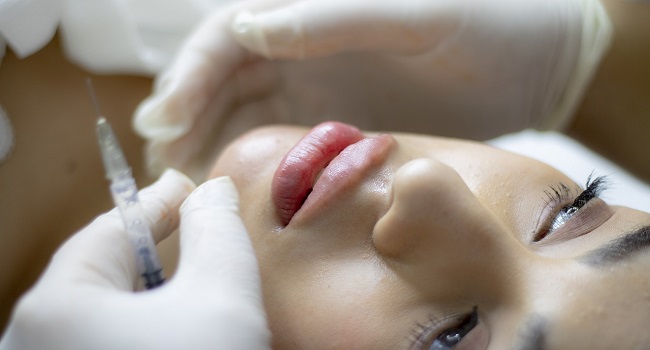Botox, the trade name for botulinum toxin, is one of the most recognized and widely used treatments in the cosmetic and medical fields. While it’s famous for reducing wrinkles and fine lines, Botox has a range of medical applications that extend far beyond aesthetics. This comprehensive guide takes a deep dive into the diverse uses of Botox, exploring its cosmetic applications for rejuvenating the face and its lesser-known medical uses for conditions like migraines, muscle disorders, and excessive sweating.
Cosmetic Uses of Botox
Wrinkle Reduction
Botox is renowned for its ability to minimize the appearance of crow’s feet, the fine lines that form around the corners of the eyes. According to the licensed estheticians and registered nurses behind the SDBotox Medical Spa, by targeting specific facial muscles responsible for these wrinkles, Botox can smooth and rejuvenate the eye area, creating a more youthful look. Also, wrinkles between the eyebrows, often called “11 lines,” can make an individual appear perpetually angry or stressed. Botox injections relax the muscles responsible for these lines, softening their appearance and restoring a more relaxed and youthful expression. Botox can also effectively address forehead lines caused by repetitive muscle movement. By injecting the toxin into specific points on the forehead, it relaxes the muscles and reduces the prominence of these lines.
Brow Lift
Botox can be strategically used to lift and reshape the eyebrows, providing a non-surgical alternative to a traditional brow lift. This technique involves injecting Botox into specific brow muscles to create a subtle and natural-looking lift, opening the eyes and making a more refreshed appearance.
Jawline Slimming
For individuals with a broader jawline due to hypertrophy of the masseter muscles, Botox offers a non-invasive solution. By injecting Botox into the masseter muscles, they gradually shrink, resulting in a slimmer and more sculpted jawline.
Neck Bands
Botox can address the vertical bands or “turkey neck” that form in the neck area due to muscle contractions. The injections relax the muscles, reducing the visibility of these bands and creating a smoother neck appearance.
Medical Uses of Botox
Chronic Migraines
One of the lesser-known medical applications of Botox is its use in managing chronic migraines. For individuals who suffer from frequent and debilitating migraines, Botox injections can provide relief. The treatment involves multiple injections around the head and neck every few months, effectively reducing the frequency and intensity of migraines for many patients.
Muscle Spasms and Dystonia
Botox is an invaluable treatment for muscle disorders, particularly muscle spasms and dystonia. Conditions like cervical dystonia, which results in painful neck muscle contractions, can be effectively managed with Botox injections. It works by relaxing the affected muscles, providing relief and improved mobility.
Strabismus and Blepharospasm
Strabismus, commonly known as crossed eyes, blepharospasm, and involuntary eyelid spasms, can be treated with Botox. The injections are strategically administered into the affected eye muscles, helping to correct alignment issues and alleviate spasms.
Botox Injections: What to Expect
Whether you’re considering Botox for cosmetic reasons or as a medical treatment, understanding the injection process is crucial. The process typically begins with a consultation with a licensed and experienced healthcare provider. During this consultation, you’ll discuss your specific goals and concerns. The provider will identify the appropriate injection points based on the treatment area, and they will mark these points on your face. Using a fine needle, the provider will inject the proper amount of Botox into the targeted muscles. After the injections, you may experience mild redness, but side effects typically resolve within a day or two. Botox results appear within a few days to a week after the treatment. You’ll notice a smoother, youthful appearance with reduced wrinkles and fine lines.
Medical Botox Injections
For medical Botox treatments, a thorough diagnosis is necessary to identify the condition being treated. Consult a healthcare provider specializing in the relevant field. Once the condition is diagnosed, a treatment plan is created. This plan will detail the injection sites, frequency of injections, and expected outcomes. The Botox injections are administered at the specified points, based on the medical condition. A trained medical professional performs the procedure. Depending on the condition being treated, there may be a recovery period and follow-up appointments to monitor progress. The results of medical Botox treatments vary depending on the condition. For chronic migraines, relief often starts within a few weeks, while treatments for muscle disorders can provide more immediate relief.

Botox, initially developed for medical purposes, has become a versatile treatment with applications in both the cosmetic and medical fields. It offers a non-surgical, minimally invasive solution to various aesthetic and medical concerns. Whether you’re seeking to reduce wrinkles and fine lines, manage chronic migraines, alleviate muscle spasms, or address other conditions, Botox provides a practical and well-established option. However, it’s essential to consult with a licensed healthcare provider who specializes in Botox treatments to ensure safe and satisfactory results. With its wide-reaching benefits, Botox continues to be a powerful tool for enhancing appearance and improving the quality of life for countless individuals.
















